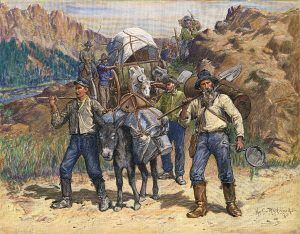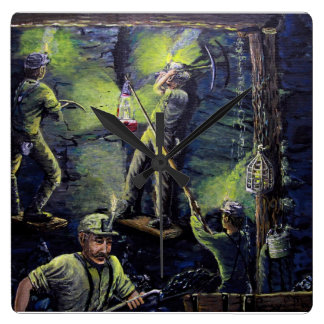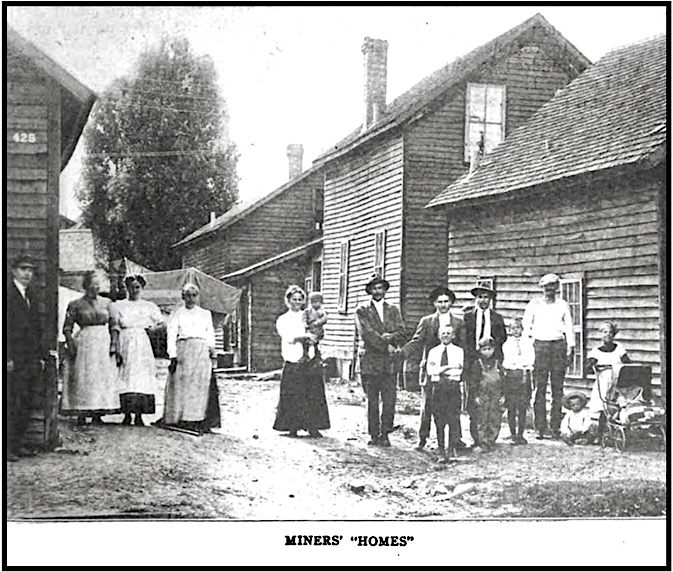
The Veins of America: Tales from the Deep Earth
Down in the dark, where the earth breathes cold and the only light is what you carry, a miner learns a thing or two. We oldtimeminers, we ain’t just diggin’ for gold or copper, coal or silver. We’re diggin’ through time, through the very bones of this land, and when you do that, you find more than just ore. You find stories. You find the whispers of those who came before, the echoes of their hopes and their fears, etched into the rock like ancient hieroglyphs. These ain’t just fairytales, son. These are the legends of America, and they run deeper than any shaft we ever sank.
We’ve spent our lives in the belly of the beast, feeling the tremor of the earth, hearing the creak of the timbers, the drip of water that’s been seeping for a thousand years. And in that isolation, in that primal dark, the mind wanders. It fills the shadows with shapes, the silence with sounds. That’s where the legends truly come alive for us. They’re not just tales told around a flickering campfire; they’re a palpable presence, a warning, a promise, sometimes a curse, hanging heavy in the air, thick as the dust after a blast.
Take, for instance, the sheer, intoxicating madness of the Lost Dutchman Mine. Now, you ask any prospector worth his salt, and he’ll tell you about the Superstition Mountains out in Arizona. They call ’em "Superstition" for a reason. Jacob Waltz, the Dutchman, supposedly found a gold mine so rich it’d make a king weep. But he took the secret to his grave back in 1891, after supposedly telling a few folks on his deathbed. Since then, thousands upon thousands have gone into those jagged peaks, chasing that glimmer of phantom gold. We’ve seen enough of ’em come back empty-handed, eyes wild with the desert sun, or worse, not come back at all. They say the Apache guardians of the land, the spirits of the old gods, or maybe the Dutchman himself, protect that treasure with a vengeance. We’ve heard the stories of prospectors found headless, or simply vanished into the scorching rock. "The mountains demand their due," old Man Jenkins used to say, his face etched like the canyons, "and sometimes that due is more than just sweat." It ain’t just a story of lost gold; it’s a testament to the insatiable human hunger for wealth, and the terrible price the land sometimes exacts.

But not all legends are about treasure. Some are about the raw, untamed wildness of this continent, the things that still roam where paved roads fear to tread. Up in the Pacific Northwest, where the old-growth forests claw at the sky and the mist hangs heavy, there’s Bigfoot, or Sasquatch as some call him. We ain’t exactly forest rangers, but we’ve seen enough strange tracks and heard enough unearthly howls on our way to new claims, or even just hiking out of a worked-out one. Miners, we respect the wild. We know there are corners of this world the maps don’t show and science can’t explain. Is he real? Well, a lot of folks, even some educated types, believe there’s a large, ape-like hominid out there, elusive as smoke. The first recorded sighting by a white settler was back in 1811, a fur trader named David Thompson, but Indigenous peoples have told stories of these forest giants for centuries. "You spend enough time alone in the deep woods," my grandpappy used to grunt, "and you start to believe a lot of things. Mostly, you believe you ain’t alone." It’s a legend that speaks to the mystery that still clings to our wild places, a reminder that for all our progress, we’re still just guests on this planet.
Then there are the legends forged in the fire of human struggle, tales of strength and sacrifice that resonate with any man who’s busted his back. John Henry, the steel-drivin’ man. Now, he wasn’t a miner in the conventional sense, but a tunnel digger, driving steel into solid rock to make way for the railroads. We know that kind of work. The dust, the swing of the hammer, the rhythm that gets into your bones. John Henry, they say, raced a steam-powered drill and won, but died with his hammer in his hand, his heart giving out from the strain. This wasn’t just a story; it was a battle cry for the working man against the cold, unfeeling march of machines. "A man ain’t worth nothin’ if he don’t put his heart into his work," we’d tell the greenhorns, "and John Henry, he gave his whole damn heart." It’s a legend that cuts to the core of American industry, the human cost of progress, and the indomitable spirit of those who built this nation with their bare hands.
And what about the ghosts? Oh, we’ve got plenty of those. Every old mining town, every worked-out shaft, every saloon where men drank and gambled away their meager pay, has its specters. From the infamous Whaley House in San Diego, called "the most haunted house in America," to the ghost of the "Woman in White" said to roam the Stanley Hotel in Estes Park, Colorado – the inspiration for "The Shining" – this country is crawling with them. But for us, the ghosts are often closer to home. The miner who died in a cave-in, his spirit still lingering, trying to finish his shift. The whispers in an abandoned shaft, the feeling of a cold breath on your neck when there ain’t no draft. We don’t always talk about it, not out loud. But we feel it. We respect it. "They’re just lookin’ for their way home," old Man Jenkins would say, "or maybe they’re still lookin’ for that mother lode." These aren’t malicious spirits, usually. They’re just echoes, the residual energy of lives lived hard and often ended too soon, clinging to the places where they toiled and dreamed.
Then you got your regional oddities, the tales that keep you from straying too far off the path. The Jersey Devil, born of a cursed mother in the Pine Barrens of New Jersey, with the head of a horse, leathery bat wings, and hooves. Folks have claimed to see it for centuries, even a couple of lawmen back in 1909 reported seeing a flying creature. Now, we ain’t exactly spending our time in swamps, but the idea of something ancient and unholy lurking in the shadows, a local monster tied to the very earth, that’s a tale that resonates. Or the Mothman of Point Pleasant, West Virginia, a creature with glowing red eyes and enormous wings, said to have appeared just before the collapse of the Silver Bridge in 1967. These aren’t just spooky stories; they’re often warnings, reflections of local anxieties, or explanations for the unexplainable that weave themselves into the fabric of a community. They’re the things that keep you from wandering too far alone at night.
And let’s not forget the larger-than-life figures, the ones who embody the spirit of America’s expansion and its raw power. Paul Bunyan, the giant lumberjack and his blue ox, Babe, who carved out lakes and rivers with their sheer might. While he wasn’t swinging a pickaxe, his strength and his ability to tame the wilderness with superhuman effort resonate with the scale of our own endeavors. Or Pecos Bill, the legendary cowboy who rode a tornado and lassoed a cyclone. These are the tales that remind us of the audacious, sometimes foolish, bravery that pushed this nation westward, that drove men to conquer mountains and deserts, to seek their fortune against impossible odds. "They say Bill could drink a river dry," my foreman once chuckled, wiping sweat from his brow, "and after a twelve-hour shift down here, I reckon I could too." These are the stories that remind us of the boundless optimism, and sometimes the hubris, of the American spirit.
Why do these stories endure? Why do we, grizzled old men who have seen the harsh realities of the earth, still tell them around a pot of weak coffee or a bottle of something stronger? Because they’re more than just entertainment. They’re anchors. They connect us to the past, to the generations of miners, prospectors, homesteaders, and dreamers who came before. They’re a way of understanding the land we work, the forces we contend with, and the deeper currents of human nature.
They teach us caution, like the Dutchman’s curse. They remind us of the wild, like Bigfoot. They inspire us to persevere, like John Henry. They humble us before the unknown, like the Jersey Devil. They give voice to the unspoken fears and hopes that lie buried in the human heart, just like the precious metals buried deep within the earth.
We oldtimeminers, we know that the real treasure isn’t always gold or silver. Sometimes, it’s the story, the shared experience, the whispered legend that makes the dark a little less lonely, the hard work a little more meaningful. These legends, these veins of America, they run through us, through our history, through the very ground beneath our feet. And as long as there are men and women willing to dig, to explore, to dream, these stories will continue to gleam, reflecting the enduring, mysterious soul of this great, wild land. So listen close, son. The earth is always talking, if you know how to hear it.



